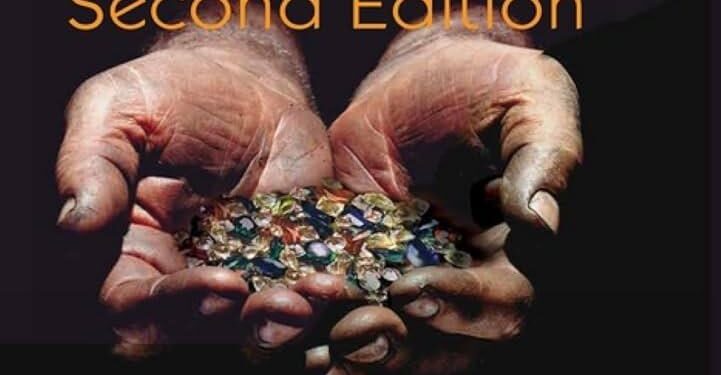Armenia’s economy is facing mounting challenges as disruptions in the gems and precious metals trade compound broader financial pressures, according to recent market analyses. The once-thriving sector, a key contributor to the nation’s revenue, has experienced notable setbacks amid fluctuating global demand and regulatory uncertainties. These developments come at a time when crude oil prices are exhibiting volatile trends, further influencing regional economic stability. This article explores the multifaceted impacts of the gems and precious metals downturn on Armenia’s economic landscape, set against the backdrop of today’s oil market dynamics reported by OilPrice.com.
Gems and Precious Metals Trade Strains Armenia’s Economic Stability
Armenia’s financial framework is currently facing mounting pressure due to ongoing challenges in the gems and precious metals sectors. Despite being a significant source of export revenue, irregularities and market volatility in these industries have led to an unpredictable inflow of capital. Experts note that fluctuating global demand and pricing inconsistencies are shrinking profit margins for Armenian traders, which translates to reduced foreign currency reserves and increased economic vulnerability.
Key factors exacerbating the strain include:
- Unstable global market prices for gold, diamonds, and other precious commodities.
- Regulatory lapses and inadequate oversight impacting trade transparency.
- Dependence on fluctuating export volumes amid geopolitical tensions.
| Commodity | Export Volume 2023 | Price Change (YoY) |
|---|---|---|
| Gold | 12 tons | -5.4% |
| Diamonds | 1,800 carats | -7.1% |
| Silver | 35 tons | -3.8% |
Impact of Fluctuating Crude Oil Prices on Armenia’s Trade Balance
Armenia’s trade balance continues to face volatility influenced heavily by the shifting landscape of global crude oil prices. Despite being a net importer of energy, the country’s economy feels the ripples of price swings far beyond fuel costs. The rising price of crude oil drives up transportation and production expenses, leading to increased import bills which strain Armenia’s trade balance. Meanwhile, the limited diversification in Armenia’s export portfolio leaves the country vulnerable to these external shocks, exacerbating trade deficits and creating macroeconomic instability.
The complexity deepens as Armenia’s key export sectors, especially gems and precious metals, do not compensate sufficiently for higher import costs tied to energy. Factors adding pressure to Armenia’s trade dynamics include:
- Rising crude oil prices increasing freight and logistical costs
- Inelastic demand for oil-dependent goods and services
- Limited scope to substitute energy imports with domestic sources
- Global commodity price swings impacting export revenues
| Crude Oil Price Change (%) | Impact on Import Costs (%) | Trade Balance Effect |
|---|---|---|
| +10% | +7% | Worsens deficit |
| -5% | -3% | Improves balance |
| +15% | +10% | Sharp deficit increase |
Policy Measures Needed to Mitigate Resource Dependency and Boost Economic Resilience
To counteract the vulnerabilities plaguing Armenia’s economy due to its heavy reliance on gems and precious metals, a diversified approach in policy planning is imperative. Enhancing investment in technology-driven sectors, such as IT and renewable energy, can provide sustainable alternatives to resource-dependent revenues. Moreover, implementing stringent regulations to ensure transparency in the gems and precious metals trade can curb illicit flows, bolstering economic stability.
Policy initiatives should also prioritize inclusive financial mechanisms that support small and medium enterprises (SMEs) beyond the extractive industries. Strategies such as:
- Tax incentives for green energy projects
- Subsidies for innovation in agriculture and manufacturing
- Strengthened trade partnerships with diverse international markets
can collectively enhance the resilience of Armenia’s economy. The table below summarizes potential policy tools alongside their expected economic impact.
| Policy Tool | Target Sector | Expected Impact |
|---|---|---|
| Tax Incentives | Renewable Energy | Increased investment & job creation |
| Trade Diversification | Manufacturing & Agriculture | Reduced dependency on precious metals exports |
| Financial Support Programs | SMEs & Startups | Boosted innovation & economic inclusivity |
To Wrap It Up
As Armenia grapples with the economic ramifications of its struggling gems and precious metals trade, the broader impact on national revenue remains a pressing concern. Coupled with volatile crude oil prices influencing regional markets, the country faces a complex landscape that demands strategic economic adjustments. Observers will be closely watching how policymakers respond to these challenges in the coming months, as Armenia seeks to stabilize its economy amid shifting global commodity trends.
















